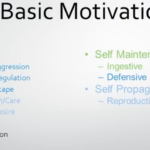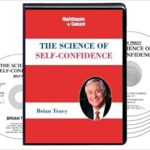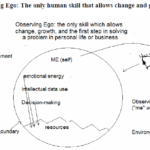Summary:
The 6 Pillars are:
The Practice of Living Consciously
The Practice of Self-Acceptance
The Practice of Self-Responsibility
The Practice of Self-Assertiveness
The Practice of Living Purposefully
The Practice of Personal Integrity
(He has intentionally called them practice as it requires practicing consistently.)
Sentence completion exercises:
– Basic idea: Take a sentence stem (like “Living consciously to me means . . .”) and create six to 10 completions of that sentence. The only rule is that each ending needs to create a grammatical sentence. Write quickly, don’t stop to think, and as Branden advises: “Any ending is fine, just keep going.”
• If I bring 5 percent more awareness to my activities today . . .
• If I pay more attention to how I deal with people today . . .
• If I bring 5 percent more awareness to my insecurities then . . .
• If I bring 5 percent more awareness to my priorities then . . .
Your level of self esteem attracts the same level of self esteem in others.
Low self esteem folks are always ‘working on’ getting it instead of achieving it.
There are choices which will help your self esteem or make it less. Self esteem shows physically with relaxed composure, not speaking timidly, etc.
Pseudo-self esteem pretends to have it but does not have the true power of it. The real thing is the core of ones being. No point winning in everyone’s eyes but staying a loser in ones own.
The greatest crime we commit against ourselves is not that we may deny or disown our shortcomings, but that we deny and disown our greatness — because it frightens us. Nothing does as much for an individual’s self-esteem as becoming aware of and accepting disowned parts of the self. The first steps of healing and growth are awareness and acceptance — consciousness and integration.
We are responsible for our own choices and actions. We need to take ownership of them and be at peace with them.
To practice self-assertiveness is to live authentically, to speak and act from my innermost convictions and feelings — as a way of life.
Live purposefully. Question 1: What do you want? Question 2: What must you do? You must have a greater purpose and goals.
Integrity is the integration of ideals, convictions, standards, beliefs — and behaviour. When our behaviour is congruent with our professed values, when ideals and practice match up, we have integrity.Parents need to show acceptance for their children no matter what. Conditional love where they get a reward when they do something that pleases the parent is not right.
If a child has enthusiasm with anything we should avoid condemnation and ridicule. Mirror their emotions and excitement.
Effective criticism is avoiding blaming the child and instead pointing out the behaviour that is not welcome. Omit character assassination.
Amazon #ads

Contents
Introduction
Part I Self-Esteem: Basic Principles
1 Self-Esteem: The Immune System of Consciousness
2 The Meaning of Self-Esteem
3 The Face of Self-Esteem
4 The Illusion of Self-Esteem
Part II Internal Sources of Self-Esteem
5 The Focus on Action
6 The Practice of Living Consciously
7 The Practice of Self-Acceptance
8 The Practice of Self-Responsibility
9 The Practice of Self-Assertiveness
10 The Practice of Living Purposefully
11 The Practice of Personal Integrity
12 The Philosophy of Self-Esteem
Part III External Influences: Self and Others
13 Nurturing a Child’s Self-Esteem
14 Self-Esteem in the Schools
15 Self-Esteem and Work
16 Self-Esteem and Psychotherapy
17 Self-Esteem and Culture
18 Conclusion: The Seventh Pillar of Self-Esteem
Appendix A: Critique of Other Definitions of Self-Esteem
Appendix B: A Sentence-Completion Exercise for Building Self-Esteem Appendix C: Recommendations for Further Study
References
Acknowledgements
Index




